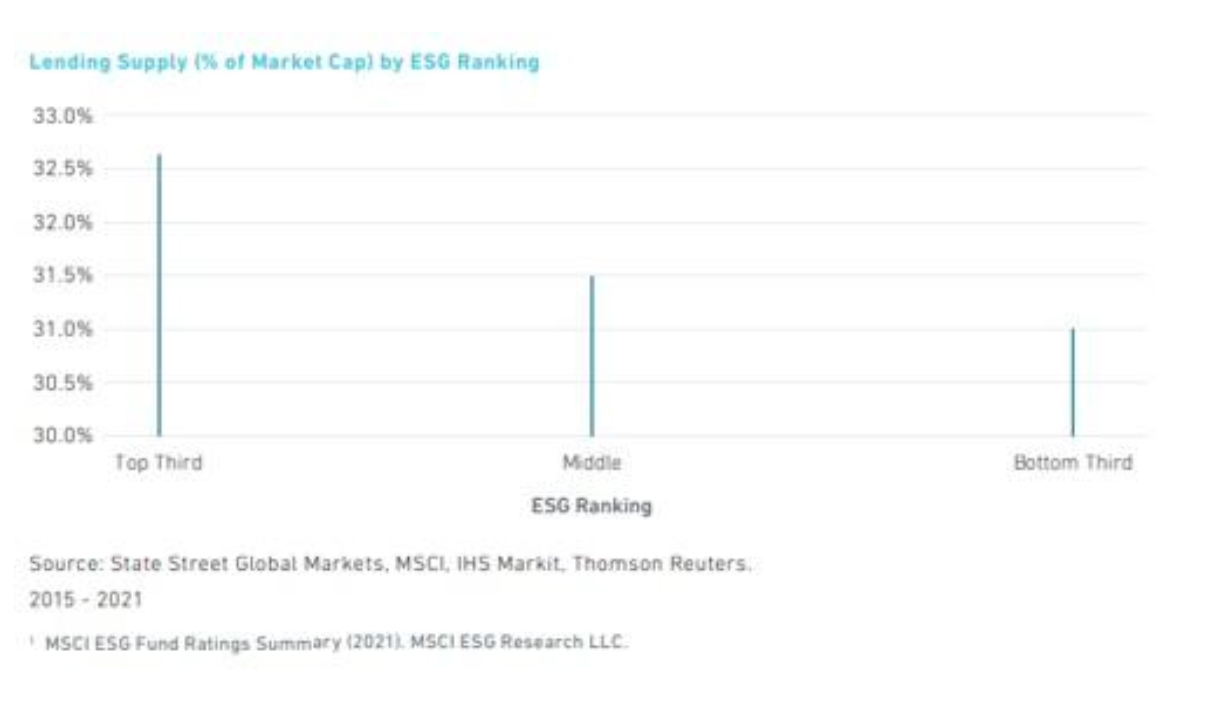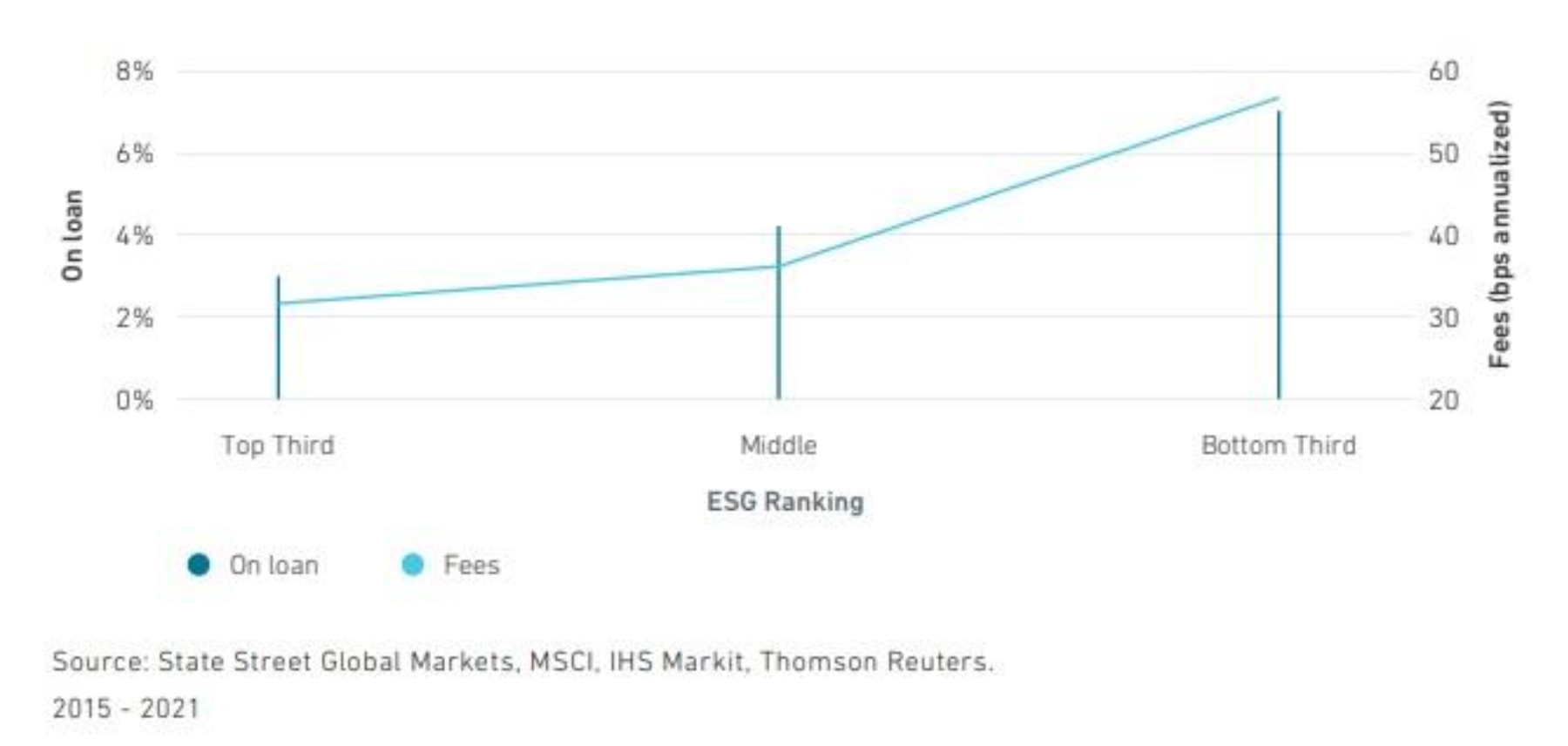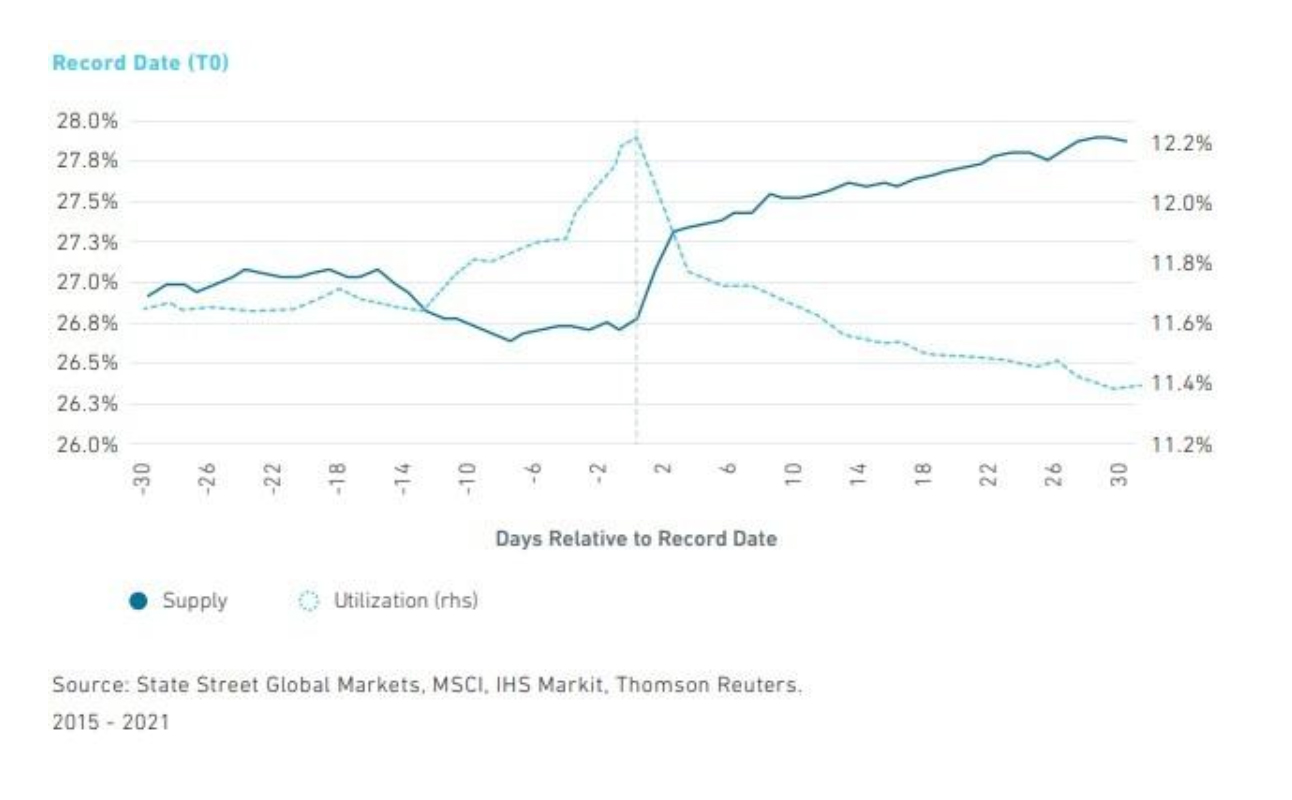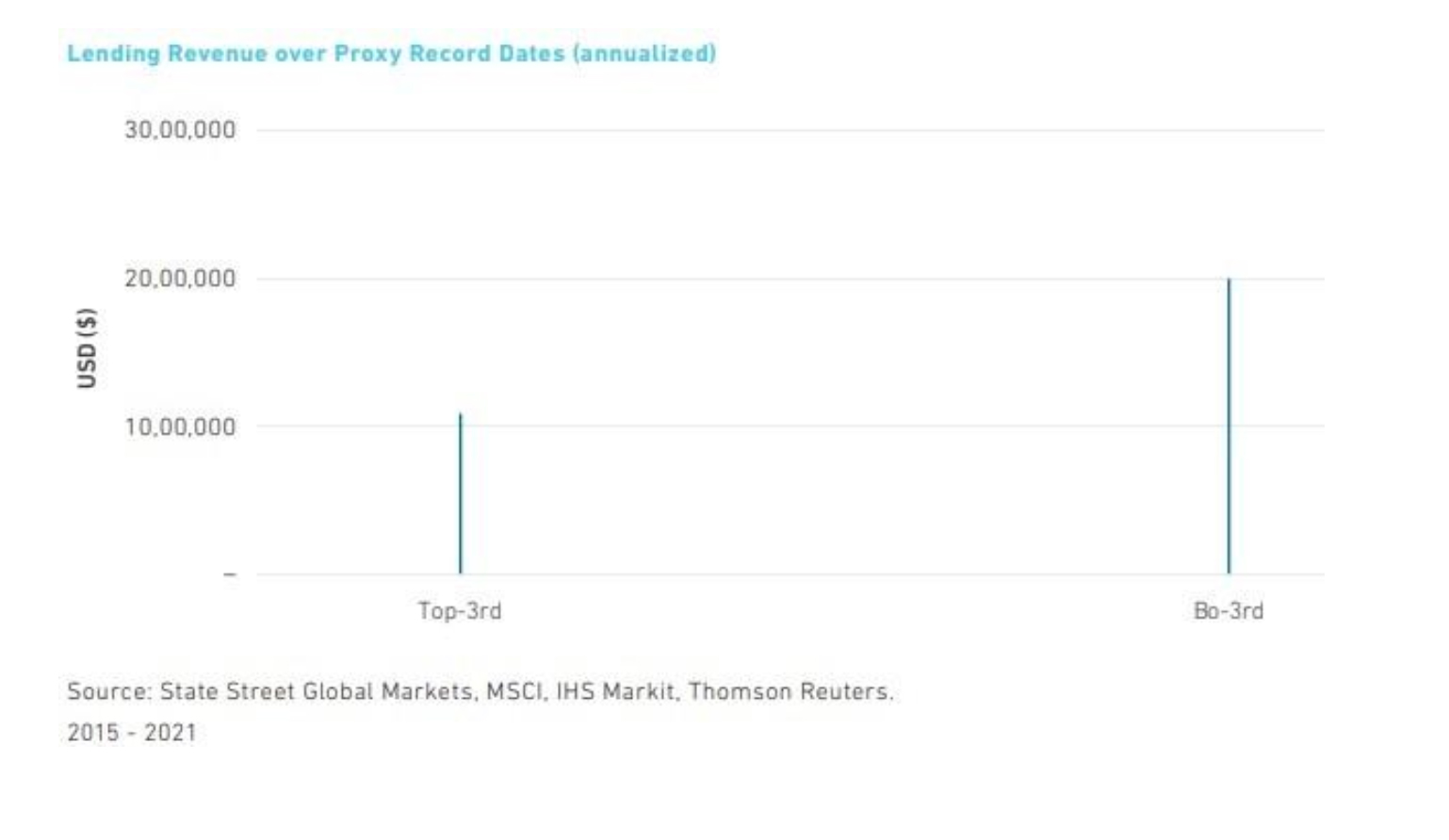ESG considerations and securities lending
21 March 2023
By combining global equities lending, ESG and proxy vote data from 2015 to 2021, State Street has evaluated the impact of ESG on loan supply, short-selling demand and institutional investor engagement. Travis Whitmore, senior quantitative researcher at research think tank State Street Associates, explains this research
 Image: stock.adobe.com/putilov_denis
Image: stock.adobe.com/putilov_denis
It is well known that ESG has become an important factor in investment decision-making, having influenced many aspects of the financial market. What is less well known is the impact this will have on securities lending markets. For example, has ESG’s influence on the holdings of institutional investors affected securities lending supply? What about their engagement over proxy votes? How have borrowers responded — are there noticeable trends in “green shorting”?
By combining global equities lending, ESG and proxy vote data from 2015 to 2021, we have explored and quantified the impact of ESG on lending supply, short selling demand and institutional investor engagement. Our findings suggest that ESG considerations are deeply embedded in the securities lending market and are growing in importance. This has implications for revenue opportunities, liquidity, and securities lending performance.
ESG and securities lending supply
First, ESG significantly impacts securities lending supply. To start our analysis, we categorise each company into three buckets based on their yearly ESG ranking, the bottom-third being "unsustainable” and the top-third being “sustainable”. As Figure 1 shows, companies performing poorly on material ESG attributes have fewer shares available for lending relative to their market cap — close to 1.5 per cent on average. In short, we have identified a significant positive relationship between ESG performance and securities lending supply. This trend has increased significantly, having quadrupled since 2015.
Figure 1: Lending Supply (% of Market Cap) by ESG Ranking

We assess that there are two factors at play here. First, institutions have shifted ownership away from stocks that perform poorly on ESG metrics. Since institutional investors are the largest providers of securities lending supply, the available supply of poorly performing ESG shares has decreased. Second, we find that they are less willing to lend out the shares of poorly performing ESG firms. Institutions own less and lend less of what they own, when it comes to poorly ranked ESG firms.
The positive relationship between ESG rankings and securities lending supply raises interesting observations. Given the lower aggregate supply, we expect borrowing fees to be higher for “unsustainable” firms.
Supply is only half the story. When we examine borrowing demand, we find compelling evidence that ESG is impacting the behaviour of short sellers. For example, in the energy industry, the shares on loan (i.e., actively borrowed) are three times higher for the bottom group of ESG ranked firms than the top third, as evidenced in Figure 2. This trend has increased through time and is market wide.
Figure 2: Fees and On Loan by ESG Ranking

Supply-demand over proxy record dates
A central tenet of responsible asset stewardship is engagement with shareholder investments and here we have also looked at how the supply level of securities available for lending changes around proxy votes.
Proxy events serve as an important channel for institutions to exert their influence and long-term company vision, a process which is often required by law and scrutinised by third parties. Institutional investors wanting to engage in a proxy vote must recall or restrict their supply of shares before the proxy record date. As we expect, there is a significant decrease in the available lending supply within 30 days of the record date — immediately after the date, supply snaps back, accounting for a 1 per cent increase in lending supply relative to the firm’s market cap, on average, as Figure 3 shows.
Figure 3: Record Date (T0)

At first glance, our data suggests that institutions may not be considering the ESG performance of a firm when engaging, as we have observed there is only a marginal difference in supply recalls or restrictions for poorly ranked firms. However, that is only part of the story.
When we consider the lending revenue that can be earned over proxy engagement periods, a different story appears. Poorly ranked ESG firms earn twice the level of revenue over proxy revenue dates, suggesting that institutional investors are willing to forgo twice the amount of revenue to engage with those firms, as Figure 4 shows.
Figure 4: Lending Revenue over Proxy Record Dates (annualised)

Overall, we have found evidence that ESG considerations play an important role in institutional investment decisions which, in turn, has significant implications on the securities lending market. There are lower levels of institutional ownership, increased levels of shorting and more engagement for firms that perform poorly on material ESG characteristics. We observe these trends strengthening through time as institutional investors appear to place greater emphasis on ESG characteristics.
Our analysis provides insights into how asset owners and managers are balancing incremental revenue earned through securities lending with their ESG objectives
By combining global equities lending, ESG and proxy vote data from 2015 to 2021, we have explored and quantified the impact of ESG on lending supply, short selling demand and institutional investor engagement. Our findings suggest that ESG considerations are deeply embedded in the securities lending market and are growing in importance. This has implications for revenue opportunities, liquidity, and securities lending performance.
ESG and securities lending supply
First, ESG significantly impacts securities lending supply. To start our analysis, we categorise each company into three buckets based on their yearly ESG ranking, the bottom-third being "unsustainable” and the top-third being “sustainable”. As Figure 1 shows, companies performing poorly on material ESG attributes have fewer shares available for lending relative to their market cap — close to 1.5 per cent on average. In short, we have identified a significant positive relationship between ESG performance and securities lending supply. This trend has increased significantly, having quadrupled since 2015.
Figure 1: Lending Supply (% of Market Cap) by ESG Ranking

We assess that there are two factors at play here. First, institutions have shifted ownership away from stocks that perform poorly on ESG metrics. Since institutional investors are the largest providers of securities lending supply, the available supply of poorly performing ESG shares has decreased. Second, we find that they are less willing to lend out the shares of poorly performing ESG firms. Institutions own less and lend less of what they own, when it comes to poorly ranked ESG firms.
The positive relationship between ESG rankings and securities lending supply raises interesting observations. Given the lower aggregate supply, we expect borrowing fees to be higher for “unsustainable” firms.
Supply is only half the story. When we examine borrowing demand, we find compelling evidence that ESG is impacting the behaviour of short sellers. For example, in the energy industry, the shares on loan (i.e., actively borrowed) are three times higher for the bottom group of ESG ranked firms than the top third, as evidenced in Figure 2. This trend has increased through time and is market wide.
Figure 2: Fees and On Loan by ESG Ranking

Supply-demand over proxy record dates
A central tenet of responsible asset stewardship is engagement with shareholder investments and here we have also looked at how the supply level of securities available for lending changes around proxy votes.
Proxy events serve as an important channel for institutions to exert their influence and long-term company vision, a process which is often required by law and scrutinised by third parties. Institutional investors wanting to engage in a proxy vote must recall or restrict their supply of shares before the proxy record date. As we expect, there is a significant decrease in the available lending supply within 30 days of the record date — immediately after the date, supply snaps back, accounting for a 1 per cent increase in lending supply relative to the firm’s market cap, on average, as Figure 3 shows.
Figure 3: Record Date (T0)

At first glance, our data suggests that institutions may not be considering the ESG performance of a firm when engaging, as we have observed there is only a marginal difference in supply recalls or restrictions for poorly ranked firms. However, that is only part of the story.
When we consider the lending revenue that can be earned over proxy engagement periods, a different story appears. Poorly ranked ESG firms earn twice the level of revenue over proxy revenue dates, suggesting that institutional investors are willing to forgo twice the amount of revenue to engage with those firms, as Figure 4 shows.
Figure 4: Lending Revenue over Proxy Record Dates (annualised)

Overall, we have found evidence that ESG considerations play an important role in institutional investment decisions which, in turn, has significant implications on the securities lending market. There are lower levels of institutional ownership, increased levels of shorting and more engagement for firms that perform poorly on material ESG characteristics. We observe these trends strengthening through time as institutional investors appear to place greater emphasis on ESG characteristics.
Our analysis provides insights into how asset owners and managers are balancing incremental revenue earned through securities lending with their ESG objectives
NO FEE, NO RISK
100% ON RETURNS If you invest in only one securities finance news source this year, make sure it is your free subscription to Securities Finance Times
100% ON RETURNS If you invest in only one securities finance news source this year, make sure it is your free subscription to Securities Finance Times



